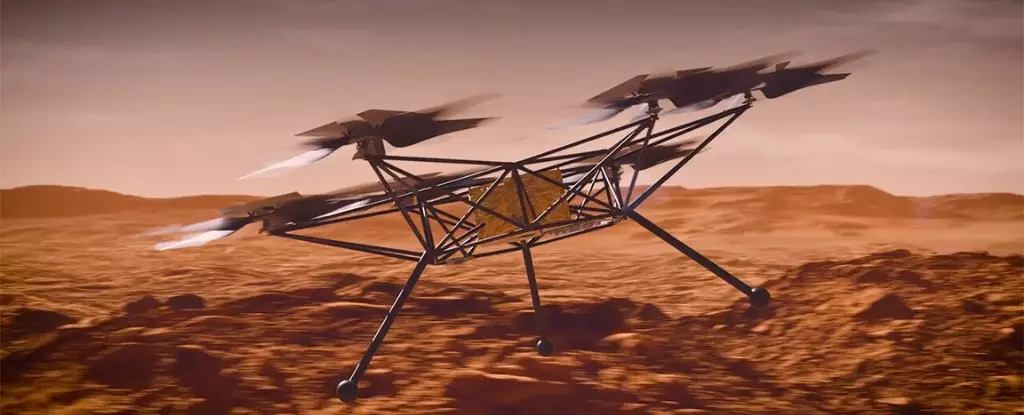In April 2021, NASA achieved a remarkable milestone when its Ingenuity helicopter made history by becoming the first aerial vehicle to achieve powered flight on another planet. This groundbreaking event marked a significant stride in extraterrestrial exploration, showcasing the potential of flying devices in environments vastly different from our own. Ingenuity’s successful demonstration has paved the way for more advanced concepts, notably the Mars Chopper, which promises to broaden our understanding of the Martian landscape and facilitate future explorations.
While Ingenuity was initially conceived as a technology demonstrator, its operational success has exceeded expectations. Launched alongside the Perseverance rover in 2020, it has completed over 60 flights on Mars, providing critical insights into the planet’s geology and atmosphere. The first historic flight on April 19, 2021, saw Ingenuity hovering just 10 feet off the Martian surface. This achievement not only validated the feasibility of powered flight in Mars’s thin atmosphere, which is less than 1% as dense as Earth’s, but also showcased the helicopter’s ability to navigate a challenging environment filled with fine, abrasive dust that can threaten operational integrity.
Ingenuity’s design and operation laid the foundation for future aerial vehicles. The challenges faced on Mars, including limited atmospheric density and environmental hazards, highlighted the need for robust engineering and innovative design. These experiences will undoubtedly inform the development of subsequent aerial drones, emphasizing the importance of tailored technologies to meet the demands of alien atmospheres.
Following Ingenuity’s triumph, NASA has unveiled a conceptual design for the Mars Chopper, a drone that aims to enhance scientific exploration beyond what previous missions could achieve. Distinctively larger than its predecessor—comparable to an SUV—the Mars Chopper is designed to carry a greater payload, significantly increasing its utility. With the capacity to transport up to 5 kilograms of scientific instruments, including advanced imaging and analysis tools, this new aircraft will facilitate deeper investigations into Martian terrain.
At the heart of the Mars Chopper’s design is its innovative rotor system, featuring six rotors with six blades each. This configuration, while smaller in individual blade size relative to Ingenuity, is engineered to generate enhanced lift in Mars’s challenging conditions. The anticipated operational range of up to 3 kilometers will allow the Chopper to traverse and map diverse landscapes, gathering vital data that could support future robotic and human missions to Mars.
Impact on Future Explorations
The Mars Chopper represents a significant leap forward in aerial exploration technology. Its proposed capabilities point towards a future where remote aerial reconnaissance becomes an invaluable tool for planetary exploration. By scouting areas that are inaccessible to rovers, the Chopper can provide critical information for mission planners and scientists, effectively extending the reach of exploratory missions on Mars and potentially other celestial bodies with solid surfaces and atmospheres.
Moreover, as humanity looks toward potential manned missions to Mars, the role of aerial drones like the Mars Chopper will become increasingly important. By offering a bird’s-eye view of the Martian surface, these drones could help identify safe landing zones, locate resources, and assess environmental conditions—tasks that are vital for the success of human exploration.
NASA’s Mars Chopper heralds a new era of exploration that builds on the successes of its predecessor, Ingenuity. By marrying technological innovation with ambitious exploration goals, the Chopper is set not just to enhance our understanding of Mars but also to redefine how we approach the exploration of alien worlds. As we stand on the brink of a new chapter in space exploration, the potential of aerial vehicles like the Mars Chopper exemplifies the innovative spirit that drives humanity’s quest to understand the cosmos. Looking forward, the advancements gained from projects like these will be crucial as we aim for the stars, ensuring our reach extends far beyond our terrestrial bounds.

